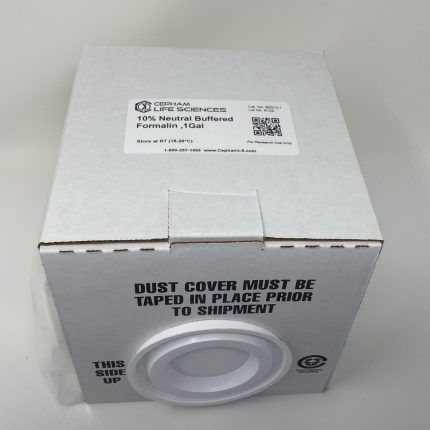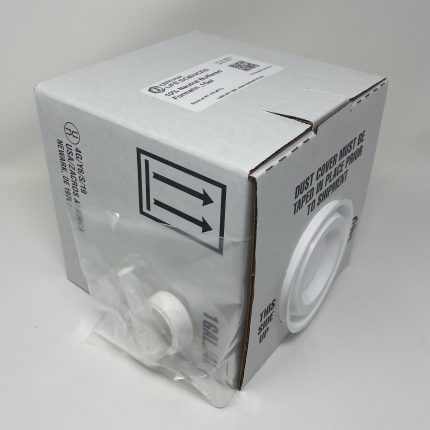DAB (3,3′-Diaminobenzidine) is a derivative of benzene, frequently utilized in immunohistochemical (IHC) staining as a chromogen for detecting nucleic acids and proteins. It is also used for techniques such as in situ hybridization (ISH)/fluorescence in situ hybridization (FISH) and occasionally in dot blots, immunofluorescence and western blotting procedures.
In DAB staining scheme, DAB is rapidly oxidized by hydrogen peroxide in a reaction catalyzed by horseradish peroxidase (HRP). Thereafter, this oxidized DAB forms an insoluble brown precipitate at the location of the HRP, which can be easily visualized using light microscopy. When used together with a nickel or cobalt solution as an enhancer, DAB substrate develops a darker and more intense, brown-black color over the antigen-antibody binding site.
The DAB precipitate is insoluble in water, alcohol, and other organic solvents most commonly used in the lab (such as xylene and isopropanol). This allows for great flexibility in the subsequent treatment of the tissue section, such as in the choice of counterstain and mounting medium. DAB staining is heat-resistant, so it can be used in double labeling IHC/ISH experiments, and displays high chemical and thermodynamic stability, whereby the processed slides present an impressive shelf-life for years after staining.
Features:
• Ideal for IHC/ICC/ISH procedures and immunoblots
• Heat stable
• Permanent/stable slide mounting
• Single and multiple labeling procedures
• Minimal exposure- Involves no handling, mixing and dissolving powders/tablets
Applications:
• In situ hybridization
• Dot Blot
• Western Blot
Molecular Formula: C12H14N4 or (NH2)2C6H3C6H3(NH2)2
Molecular Weight: 214.27 g/mol
Synonyms: 3,3′-Diaminobenzidine, 3,3′,4,4′-Tetraaminobiphenyl, 3,3′-Diaminobenzidene
CAS No.: 91-95-2
Form: Liquid
InChI Key: HSTOKWSFWGCZMH-UHFFFAOYSA-N









